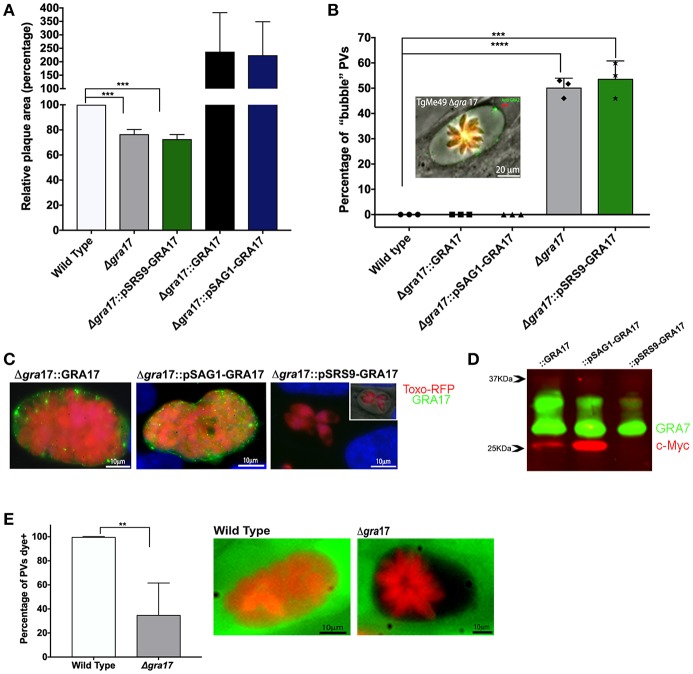Figure 1.
Characterization of ME49Δgra17 and complemented parasites. (A) Confluent monolayers of HFFs were infected with 500 tachyzoites of indicated strains for 8 days after which the area of at least 25 plaques was measured and the mean area was normalized to the wild type. (B) Confluent monolayers infected at a MOI of 2 for 48 h were used for the quantification of “bubble” vacuoles in 10 fields at 40X magnification. At least 50 vacuoles were counted for each replicate. A representative image of a “bubble” vacuole formed by Δgra17 parasites is shown, RFP (Red) bradyzoites, GRA2 (Green) IVN and PVM. (C) IFA of c-Myc-tagged GRA17 in the complemented strains during the tachyzoite stage 72 h p.i. Complemented strains are: Δgra17::GRA17, Δgra17::pSAG1-GRA17, Δgra17::pSRS9-GRA17. Inset) IFA merged with phase showing bubble vacuole. (D) Western blot of tachyzoite lysate 48 h p.i. of the indicated strains detecting c-Myc-tagged GRA17 (red) and GRA7 (green) as a loading control. (E) HFFs were infected with wild type or Δgra17 parasites and 24h p.i. CDCFDA was added for 10 min after which it was washed away. At least 50 PVs/well were counted and classified as CDCFDA-positive or negative. A representative image of a wild-type vacuole with normal permeability to CDCFDA and a Δgra17 bubble vacuoles with reduced permeability to CDCFDA is shown. Bars are averages from biological replicates (n = 5 for A and n = 3 for B and C), error bars represent SD, unpaired Student's t-tests were performed comparing each strain with the wild type to assess statistical significance (****p < 0.0001, ***p = 0.0002, **p = 0.0015).

